Conservation
Amongst a myriad of sources, the energy used to operate our buildings stands forth as perhaps the single principal cause of climate change. Given the known poor perfomance of existing building stock and contemporary construction, the inadequate capacity of renewables, their slow growth and their cost to manufacture, it becomes arguably a moral imperative to first capture the ponderous low hanging fruit available through surprisingly simple changes and fixes to our buildings, before we commit to the impact of manufacturing ever-more layers of equipment and systems. It makes no sense if our first step invests inevitably finite resources into costly 21st century technology if we then strap it onto energy guzzlers, and it might well only succeed in making the problem worse. Instead, I choose to start with conservation.
Below is a collection of some of the information which has informed this perspective.
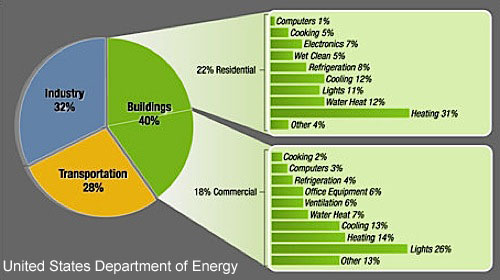
This graph, from the DOE, gives an overall snapshot of where energy is used in the US.
In residences: heating.
In commercial buildings: lighting.
This has directly informed my focus on Passive House Architecture and Sunlight Harvesting.
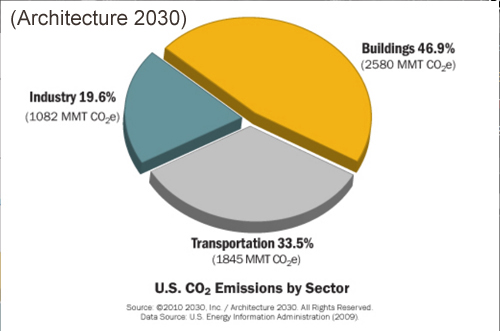
Here in the US, buildings are the largest source of CO2 emissions, by far.
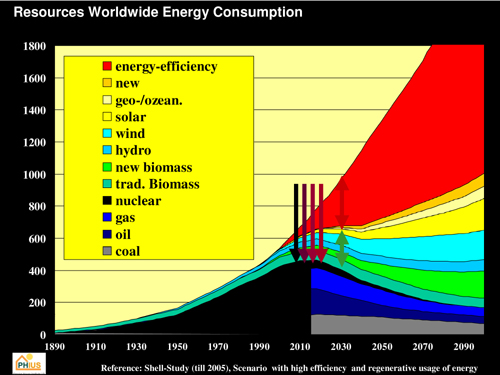
Why can’t we just switch over to renewable energy? Because the gap between what slowly-growing renewable sources like solar and wind can make and what we use is far too large. This graph from the Passive House Institute US is based upon projections by Shell Oil. It illustrates one interested company’s projection of that gap. Even with expected growth, the renewable energy sources noted in green, blue, and yellow fall far short of covering the shortfall in red: a shortfall which currently looks likely to be filled by natural gas extracted by fracking. As a professional with experience in the solar industry I am unable to share in the confident attitude that renewable technologies can advance fast enough to cover large and rapidly-growing global energy demand.
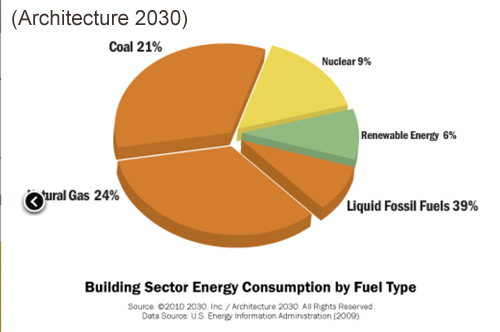
Another illustration of the same gap.
This image also illustrates that, in general, building energy use can be taken as very closely equivalent to CO2 emissions, because so little of our building’s energy sources are renewable.
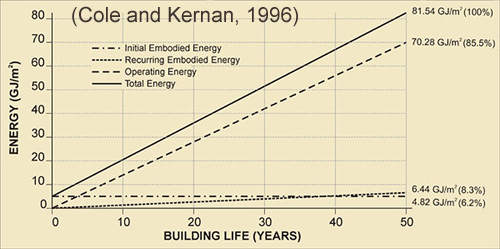
This graph illustrates that the energy used – and by extension the CO2 emitted – come from operating buildings, not from building them. Even over a modest 50-year expected lifespan, the energy used to construct a building is dwarfed by what is needed to keep it warm, cool, illuminated and in good working order.
This is another reason I find Passive House such a compelling solution and choose to give it priority over other compelling needs such as re-use of construction materials.
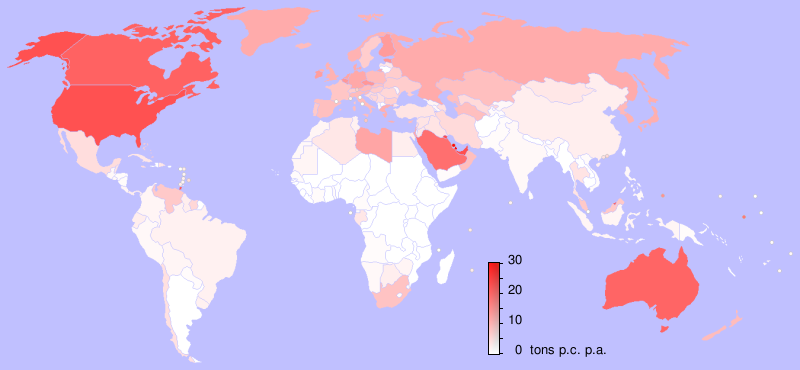
As individual human beings, we Americans are amongst the select group creating the very most CO2 emissions. This map shows per capita CO2 emissions by country, based on data gathered by the UN. Although this data is a couple years old and may not be perfect, the point seems clear enough: using our own highest measuring stick – individual responsibility – it is not the Chinese creating global warming, it is us.
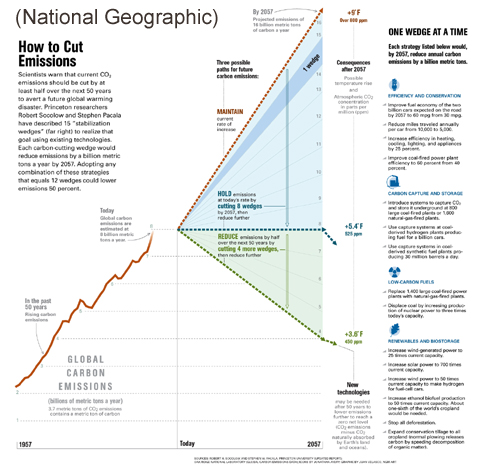
This graph shows the well-publicized contemporary increase in global CO2 emissions with projected levels if increases continue at current rates.

I am not able to share in the confident attitude that climate change will be someone else’s problem, or that human societies as we know them will be readily able to absorb the kinds of transformations implied. This image shows the impact of sea rise on lower Manhattan, dwarfing the comparatively modest flooding which resulted from Hurricane Sandy. It represents billions or trillions of destroyed real estate, destroyed public transit and utilities, pollution and massive dislocation. This image does not begin to speak to larger conditions like crop growth patterns which keep human societies around the globe in stable relation to one another. Can we take such speculations so lightly?